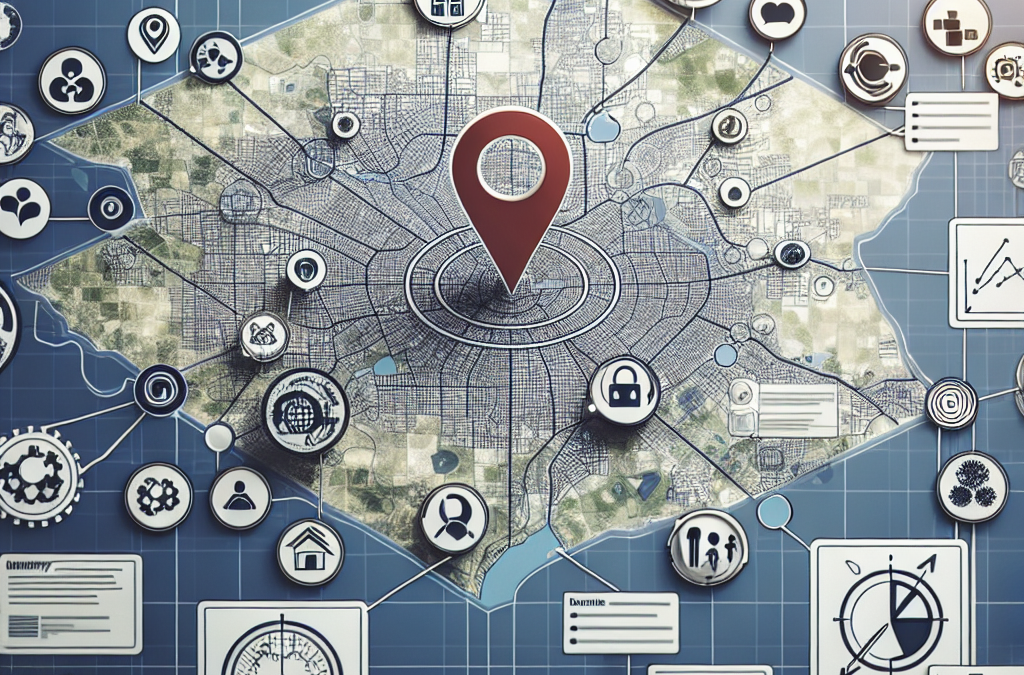Understanding Your Audience
Researching Local Demographics
When I first dived into local content, I found it crucial to really get to know the people I’m trying to reach. This isn’t just about collecting data; it’s about uncovering what makes your audience tick. Who are they? What do they care about? Digging into demographics can reveal a lot about local interests and behaviors.
Take advantage of tools like Google Analytics and social media insights to gather information about your audience. These platforms are gold mines for understanding who engages with your content. I often look at things like age, location, and interests to tailor my messages appropriately.
Ultimately, knowing your audience helps inform not just your content but your entire marketing strategy. It’s like having a roadmap that leads you directly to them. Trust me, it pays off to invest time in this foundational step.
Creating Personas
Once you’ve done your research, the next step that has worked wonders for me is creating audience personas. These are fictional characters that represent your typical customers. It’s fun and surprisingly insightful! You get to list out their goals, challenges, and what they consider valuable.
This exercise allows me to visualize who I’m speaking to, making it easier to craft relevant content that resonates. Whether it’s blog posts, videos, or social media updates, having a clear picture in mind helps guide the tone and message of your local content.
Plus, every time I sit down to create or strategize content, I refer back to these personas. It keeps me focused and ensures that my content is directly addressing the needs and wants of those in my local area.
Listening to Local Feedback
Engagement is key to understanding local preferences. After posting content, I actively seek feedback from my audience. This can be through comments, messages, or even casual conversations. Listening to what people have to say can guide future content decisions immensely.
I’ve found that sometimes the best ideas come from my audience themselves. Hosting polls or asking questions can generate a lot of valuable insights. It’s also an excellent way to make your audience feel heard and involved.
Feedback isn’t just about improving what you’ve done. It’s about building community. When people see that you’re listening, they’re more likely to engage further, creating a positive feedback loop that’s beneficial for both parties.
Optimizing for Local SEO
Keyword Research for Local Terms
Getting into local SEO is like finding treasure. I’ve spent a good chunk of time honing in on keywords that resonate with my audience. It’s not just any keywords, though; it’s specifically localized terms that help me appear in the right searches. Tools like Google Keyword Planner are super helpful here.
By focusing on local terms, I’ve seen substantial improvements in my search rankings. It’s like hitting two birds with one stone: you draw in traffic while simultaneously catering to local interests. Make sure to use these keywords naturally in your content for maximum impact.
Remember, just stuffing keywords won’t get you anywhere! They should blend seamlessly into your content, enhancing rather than detracting from your message.
Utilizing Google My Business
One of the best tips I’ve received is to take full advantage of Google My Business (GMB). Setting this up was a game-changer for my local visibility. It puts my business on the map—literally! Make sure to fill out every field, add engaging photos, and update your info regularly.
Having a GMB profile means your business can pop up in searches, but that’s just the beginning. I actively encourage my customers to leave reviews, which helps boost my credibility and rankings even further.
Pay attention to the questions and answers section as well; engaging here shows potential customers that you’re attentive and care about their inquiries. Trust me, it pays off in trust and traffic!
Building Local Backlinks
Link building is still a vital piece of the SEO puzzle. When I optimized my local content, I made sure to focus on getting local backlinks. Whether it’s through sponsorships, collaborations, or simply connecting with other locals online, each backlink helps boost my authority.
Not only do these backlinks improve your SEO game, but they also help build relationships. I’ve collaborated with local businesses and bloggers to create content that can be beneficial for both parties. It’s such a win-win!
Plus, it gets your name out there! More exposure means more chances to reach your audience, which is exactly what we’re aiming for with local content.
Engaging with the Local Community
Participating in Local Events
Getting involved in local events is one of my favorite ways to marry online and offline engagement. Whether it’s sponsoring a local sports team, participating in fairs, or hosting workshops, these events provide fantastic opportunities to connect.
By attending and participating in these events, I get to meet face-to-face with my audience. It’s not just marketing; it’s relationship-building. I always walk away with new ideas and fresh insights that directly feed into my content strategies.
Plus, it’s also refreshing to step away from the computer and interact with people in real life. Digital can get so isolating sometimes! Being active in your community reinforces your business’s commitment to the area.
Supporting Local Causes
You know, I’ve found that one of the best ways to engage the community is by supporting local causes. Whether it’s a charity run or a school fundraiser, showing that you care about local issues goes a long way. People appreciate businesses that invest in their communities.
Beyond just support, I try to highlight these causes in my content. It creates a more personal connection, allowing people to see the heart of my brand. Plus, it encourages others to engage and support those causes as well.
Working with local nonprofits has not only helped me reach new audiences but also brings genuine satisfaction. It feels great to know that your business can make a difference!
Creating Localized Content
Creating content that specifically targets local interests can help resonate with your audience on a deeper level. I often spotlight local stories, businesses, or even significant events in my area through blog posts or social media campaigns.
This not only enhances community spirit but also draws in those searches that are grounded in local interest. Everyone loves seeing their hometown represented, and I strive to shine a light on what makes our community so special.
The more localized your content is, the better the connection you build with your audience. So get creative, think outside the box, and showcase what you love about your local scene!
Measuring Local Content Performance
Setting Up Analytics
No strategy is complete without measurement. I make sure to set up analytics specifically for my local content campaigns. A simple overview of what works and what doesn’t can turn things around significantly. It’s all about finding those hidden gems in the data!
I love using tools like Google Analytics to track views, interactions, and even conversion rates. It allows me to gain insights into how my audience engages with different pieces of content, helping refine future strategies.
Never underestimate the power of data. It’s what helps ground decisions and target efforts where they’ll yield the most impact. You’d be surprised what small tweaks based on performance data can do!
Analyzing Engagement Metrics
Another important aspect for me is diving into engagement metrics, like comments, shares, and likes. Understanding how your audience interacts with your content tells a deeper story than just raw traffic numbers.
If a post gets a lot of shares, it’s a clear sign that the content resonated. I take the time to analyze what made that content special—was it the topic, the tone, or perhaps the visuals? This critical analysis helps replicate success in future posts.
Learning from these metrics keeps your content fresh and engaging. After all, content is not just about pushing your message; it’s about creating dialogue and community involvement!
Adapting Based on Feedback
Lastly, taking the time to adapt based on feedback can’t be overstated. I make it a point to review comments and messages regularly, looking for patterns in what my audience is saying. It’s a goldmine for learning what they love and what could use tweaking.
Sometimes it’s just a matter of being flexible. If your audience craves more local stories or particular topics, lean into that! After all, your content should always serve your audience’s needs.
Remember, optimizing local content is a continuous journey. Just like communities, needs and preferences evolve over time. Staying adaptable is key to maintaining relevance!
FAQ
What is local content optimization?
Local content optimization involves creating and promoting content specifically tailored to a local audience. It includes understanding local demographics, optimizing for local SEO, and engaging with community initiatives.
How can I find local keywords?
Utilize tools like Google Keyword Planner or Ubersuggest to discover local keywords. Focus on including terms that are specific to your city or neighborhood, as well as popular search phrases that your audience may use.
Why is Google My Business important?
Google My Business is crucial for local visibility as it helps your business appear in local search results and maps. It allows potential customers to find information about your services, hours, and location easily.
How can I measure the success of my local content?
Utilize analytics tools to track engagement metrics such as page views, shares, comments, and conversion rates. Continuously analyze performance to understand what resonates with your audience.
What types of content should I create for a local audience?
Create a variety of content such as local news, events, stories, and profiles of local businesses. Showcase what makes your community special and relatable, and keep the tone tailored to your audience’s interests.


